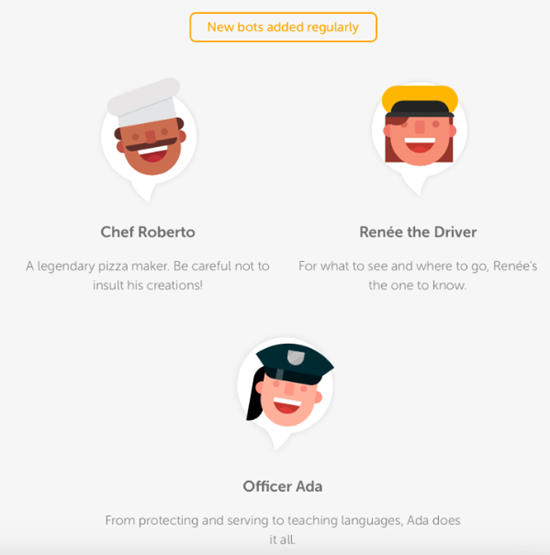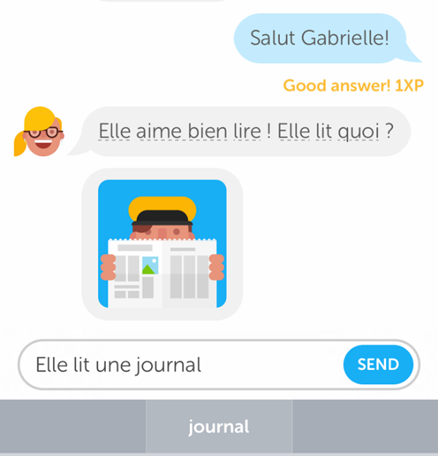
Contact Center, Productivity, Innovations
4 Effective Ways To Enhance Profit In Contact Centers

Chatbots are a part of conversational AI technology that can conduct a conversation between a user and a machine. This can happen over a website, mobile applications, telephone, and even on social media platforms. With the power of natural language processing and deep learning, chatbots have penetrated the regular lives of consumers. In fact, 67% of the global consumer pool have used chatbots in 2021 and that number is increasing rapidly.
Contents:
1. History of Chatbots
2. Benefits of Chatbots
3. Popular Examples of Chatbot Success
Believe it or not, chatbots have been around since the 1960s. An MIT professor called Joseph Weizenbaum created ELIZA as a Rogerian psychotherapist chatbot. Also, chatbots were originally called chatterbots, but I guess that didn’t catch up! ELIZA was one of its kind where the first signs of artificial intelligence were tested. The chatbot followed a technique called “pattern matching” where the conversations have not analyzed for context. The chatbot will just stick to its original script called the DOCTOR and cannot go beyond to help. While the chatbot was an experimental feat, scientists and engineers recognized its potential to become something extraordinary that can positively impact people’s lives.
Originally, professor Weizenbaum created ELIZA to demonstrate how superficial and disconnected communication can be between the human and the computer. But to his surprise, people responded genuinely when speaking to the chatbot. This is where the use cases of a chatbot were initially recognized. Without these steps, we wouldn’t have the current leisure of relieving our daily issues through chatbots.
Fast forward to 2009, the Chinese corporate giant Tencent created a social media-cum-chatting platform called WeChat. WeChat gained massive popularity, making millions of people active on it. In a few years, the business decided to allow people and organizations to create simple chatbots to interact. While these bots were very primitive, it was a futuristic measure on their own. Moving on to 2012, a former Google employee created another bot that could run on WeChat and other platforms. This bot could not only respond intelligently but also had voice recognition features. And suddenly we were closer to the current day innovation of AI-driven chatbots.
Slowly, Facebook took the world by storm. And by the launch of Facebook Messenger, Zuckerberg announced how Facebook chatbots are available to all businesses to leverage for better customer service. Brands found this to be a golden opportunity and created specialized bots with in-house assistance. Every brand struggled to become different and unique from the others and succeeded. Customers were experiencing a new level of engagement and convenience and eventually, this became a trend. In 2022, we can’t even imagine a website or a brand without chatbot assistance.
Chatbots are key to efficient engagement across platforms. From social media to your mobile applications, AI-conversational bots are helping customers every day, round the clock. It reduces the load of the customer support agents and doesn’t bother them until it is necessary. Here are some primary benefits of chatbots:
The Huffington Post is a popular internet news company that delivers commentary and journalism on everything in the world. From international affairs to pop culture, HuffPost has been on the trend for a while now. With a huge fan following on social media, they had to engage their customers better to keep them hooked on their services. The Huffington Posts’ entertainment team decided to leverage Facebook chatbots to create real-time engagement. The AI is trained to not only deliver the news but also to offer Netflix suggestions.
They realized that the millennial crowd is hooked on OTT entertainment and they often wonder “What to watch next?” To relieve their audience of this dilemma, the bot is trained to ask the users questions like what they want to watch: a movie, a documentary, or a tv show. Based on that the chatbot will offer suggestions.
For a news-based company, this is a brilliant way to connect with its audience, learn about their choices, and offer real-time interaction. It’s a truly enjoyable experience for the current audience category.

Duolingo is a popular language-learning app, whose certification programs now have global recognition. The app is completely free and enables people to learn any language without any hassle. But a major problem was those people were learning in isolation. They needed to practice to improve their conversation skills.
The company decided to hire language experts to speak with the audience and help them improve, but the majority of the audience shied away. Hence, the brand realized that an in-built native chatbot can help people better. They developed chatbots with personalities of day-to-day people to instigate regular conversations. This resolved a major customer issue and improved their service quality by a scale.


Leadpages is a famous drag-and-drop landing page creating platform. It also allows you to create websites, pop-ups, and more. They realized that they had a high visitor count but a very low conversion rate. To convert people, they had to engage them. With a simple placement of a chatbot on their website, they increased their conversion rapidly. People who were casually browsing were seen as leads and could be potentially interested in subscribing to their service.
The only thing they did differently was to not be basic. In other words, they changed the chatbot pop-up message according to the page that was being visited. For example, on the pricing page, they would share competitor comparison data and add more info through the pop-up. With value-added engagement, they were able to push visitors into their sales funnel and take it from there.

Yes, we use chatbots extensively for our business. Our chatbot helps our customers to report issues or new requirements. The chatbot is intelligent to verify the credential of the customer and qualifies the requests. It then creates a service ticket with a docket number and internally assigns it to the customer success team. It also provides the docket number to the client for further follow-up. The chatbotalso interacts with visitors to help them in their browsing and also takes requests for demos or proposals. At any point, the customer or visitor can opt to interact with the live agent. During the hand-off, the service agent can view the interactions the visitor had with the bot so that the agent can continue the discussion seamlessly. Over 70% of our interactions are managed by the bot which has helped in optimizing the utilization of our helpdesk team.
Conclusion
Chatbots are getting smarter every day. Newer integrations or features are making it a cutting-edge technology that can bring huge advantages to any company. Knowing how to target your audience with chatbot messaging, and improving your branding and strategy will definitely show results. I shared examples to demonstrate that it isn’t just another buzzword. Conversational AI is bridging the gap between brands and customers and you should make the most of it. Explore different chatbot features and offerings with our industry experts.

Contact Center, Productivity, Innovations
4 Effective Ways To Enhance Profit In Contact Centers

Contact Center, Dialer, Omnichannel, Productivity
5 Ways Predictive Dialers Make Outbound Contact Centers Successful

Customer Experience, Contact Center
5 Ways Customer Interaction Improves Your Business In 2025